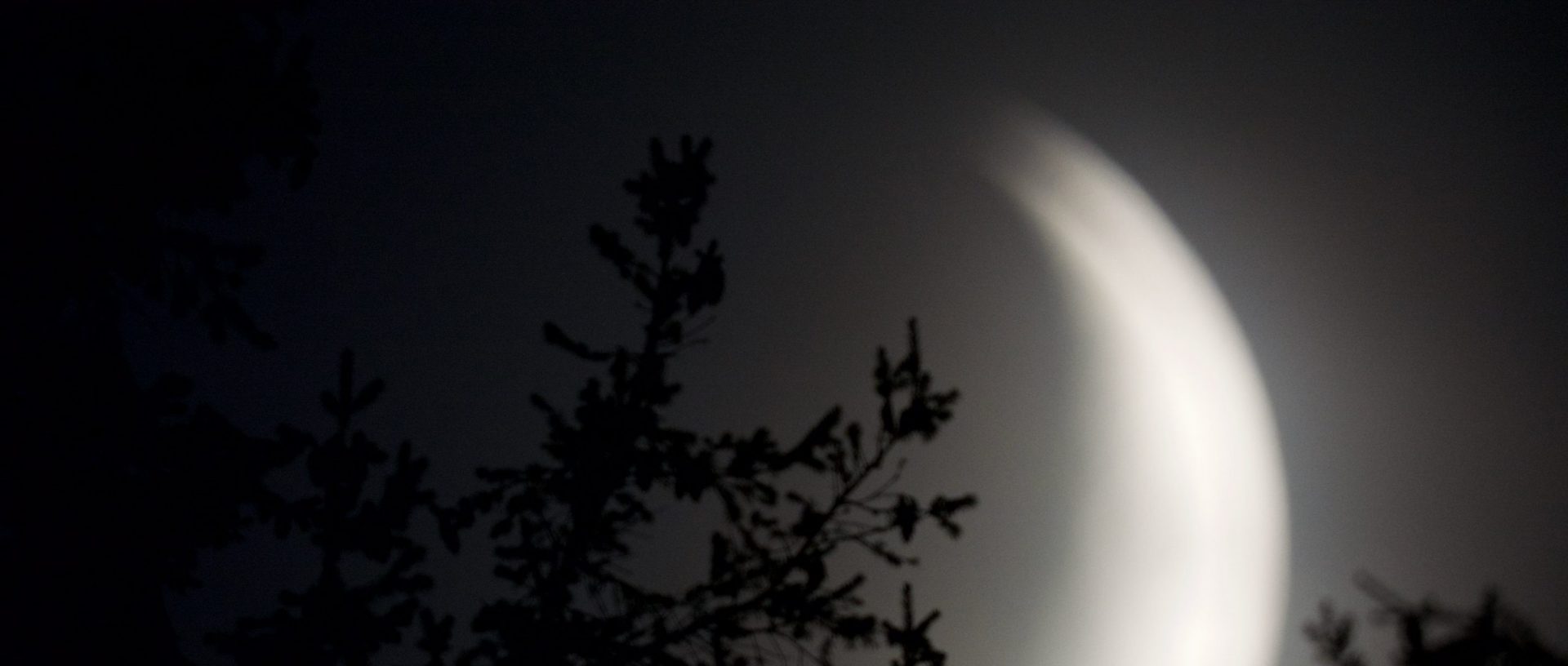I have the HyperStar v.4 from Starizona to pair with my Celestron EdgeHD 8 scope. It replaces the secondary mirror on the EdgeHD and turns a 2000mm focal length f/10 scope into a super fast f/1.9 390mm one. The benefits are well documented around the interwebs, but in brief (and in theory), the HyperStar slashes exposure times significantly and enables what is typically a relatively deep-reaching scope to take in the full view of large fields and deep sky-objects. What this also means is that the shorter exposures and forgiving focal length eliminate the need for polar alignment for some objects, and make super-accurate alignment unnecessary for most others.

I say all this “in theory” because… it’s been cloudy for virtually the entire month that I’ve owned one.
I did recently have a brief window of–I won’t say “good” conditions but will go so far as to say “not raining” conditions. So I decided to take that limited time to take on what seems to be the biggest issue people have with the HyperStar: collimating it via its three pair of set screws. These are very sensitive beasts, with virtually no wiggle room in either collimation or back focus distances.
I’d read numerous places that Dean (the HyperStar’s creator and vendor) recommends starting out with the screws all the way in and the body flat against the mounting ring. My scope itself is collimated well, so I thought I might be good-to-go with that setup. Turns out that wasn’t the case.
Below is the only target I had in my limited view of the sky during the limited time I had to try to get this thing collimated the other night. This is a VERY wide-view shot of NGC 2419, the “Intergalactic Wanderer,” an ancient globular cluster so far away from the Milky Way and taking so long to orbit it (roughly 3 billion years) that it was initially thought not to be gravitationally bound. It’s tiny in this field of view… basically just a fuzzy star in the center.

The object itself wasn’t the real purpose here, I was out to see how good the stars looked across the full field. Close inspection revealed: not good. Stars in the center were fairly round in the 120 second exposures I was taking:

But the edges were a completely different story. Distorted, comet-looking stars abounded, a tell-tale sign of poor collimation on the HyperStar:

All this begged the question of: how do you collimate a HyperStar? Options apparently run from spending 500 bucks on a system of lasers to just taking photos and messing with the screws until you get it right. In the end, I chose the path that I found on Cloudy Nights and that can be read up on in excruciating detail here. In short, this method involves obscuring a large portion of the scope with a circular mask, hooking up the HyperStar and camera, then defocusing on a bright star until you get a white donut on your screen (from the shadow of the mask) that can be used to determine how centered things are throughout the focus range. If the dark shadow in the center is off-center, you adjust the set screws until it brings it back into place. Do this repeatedly as you focus in and, in theory, you’ve collimated the HyperStar.
To create the mask, I followed the article’s suggestion and picked up some foam posterboard from my local artsy-craftsy supply store. I also wound up with a piece of 0.04″ thick balsa wood that could be used to make shims for the initial setting–the purpose being that you want the HyperStar screws all set evenly, but having a bit of room to make collimation adjustments.

To cut the mask, I stole a compass from one of my kid’s math supplies and traced out concentric circles… one the measured width of the secondary mirror hole in the corrector plate of the scope and the other, larger circle wide enough to cover roughly half of the visible part of the corrector plate.

As the article says, making the center hole just big enough to fit over the secondary mirror hole helps ensure the mask stays centered. With this, I slapped everything together, performed a quick alignment on the mount, and got to work on Capella, which is conveniently right above my head this time of year. The initial problem was… there didn’t seem to be anything to correct. My initial defocus on Capella revealed a donut hole that looked pretty damn centered to me as I focused in and out:

I thought maybe there was a bit of a thinner wall toward one side of the circle, so I adjusted the set screws on that side ever so slightly until it looked a teensy little bit better. Then I grabbed a 20 second shot to check things out. Indeed, they were better… which seemed INSANE to me. I barely moved the damned screws, but the difference was pretty clear:

There were still little comet trails (i.e., coma) at the edges of the frame, but the tails were definitely shorter, a sign that I was on the right track. Success-ish! I was about to go for round two on the micro-adjustment front to eliminate them all together when the completely predictable happened… the clouds moved in signaling another month of 100% Northwest Gloom cloudy skies. Still, I’m going to call this a partial success and will be giving things another try as soon as I’m able see a star again. You know, several months from now. Stay tuned.



I am having the same issue with a Hyperstar 3 on an 8″ Edge HD. Is there a followup to this post? Were you able to achieve good collimation and round(fish) stars over the entire field?
It’s been many months since this post, curious as to what your thoughts are on the Hyperstar system as it pertains to the unique challenges of PNW astrophotography? Do you find it maximizes the precious, precious windows of clear skies?
Hi Kevin. I think it depends. Collimation is an issue, and that eats up time. It is also a fussier setup, with cabling, focusing, filters, etc. all made a bit more complicated. That said, it is a very, VERY fast setup. On bright objects, you really can get some impressive detail with not much imaging time. That also makes a huge difference on pulling in fainter light sources like OIII. I paired with the 2600MC camera, which has a massive amount of pixels, so I’ve found that I can crop out collimation issues. But, if I had to do it all over again, my “fast” setup would probably have been what I now use for my traveling setup: a trusty RedCat 51. Simple, reasonably fast, super sharp, VERY forgiving setup.
Hope this helps!
Oh good to hear! I’ve debated the RASA / HD8-Hyperstar setup here in Oregon but the maintenance costs (in units of time) have always concerned me. With imaging windows being so infrequent and without warning, I haven’t been able to bring myself to do it yet. Your post almost convinced me until I got to the part where you talk about if you had to do it again… I already have a RedCat with 2600MC on a RST-135E and it is sublime as an impromptu/travel imagining rig. Thanks for sharing your impressions!
Informative articles, excellent work site admin! If you’d like more information about Bitcoin, drop by my site at Webemail24 Cheers to creating useful content on the web!
An excellent read that will keep readers – particularly me – coming back for more! Also, I’d genuinely appreciate if you check my website Seoranko about Blogging. Thank you and best of luck!
Your blog has really piqued my interest on this topic. Feel free to drop by my website ArticleHome about SEO.
Great post! I learned something new and interesting, which I also happen to cover on my blog. It would be great to get some feedback from those who share the same interest about Accident Car Purchase, here is my website Autoprofi Thank you!
With your post, your readers, particularly those beginners who are trying to explore this field won’t leave your page empty-handed. Here is mine at Articleworld I am sure you’ll gain some useful information about Classified Ads too.
With your post, your readers, particularly those beginners who are trying to explore this field won’t leave your page empty-handed. Here is mine at Article Sphere I am sure you’ll gain some useful information about Construction Industry too.
Hurray, this is just the right information that I needed. You make me want to learn more! Stop by my page Article Star about Grilling.
Sharing is caring the say, and you’ve done a fantastic job in sharing your knowledge on your blog. It would be great if you check out my page, too, at FQ7 about Cosmetics.